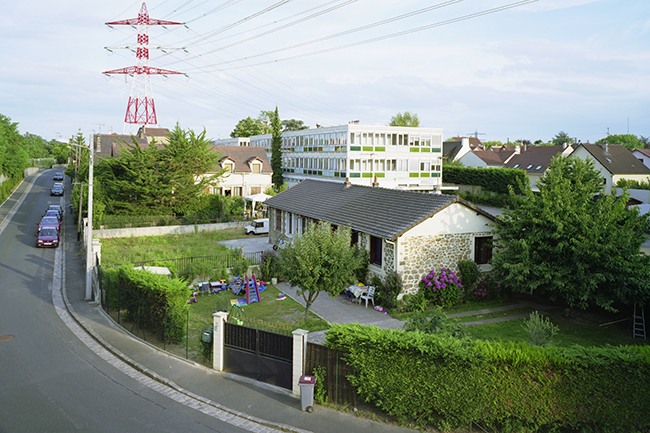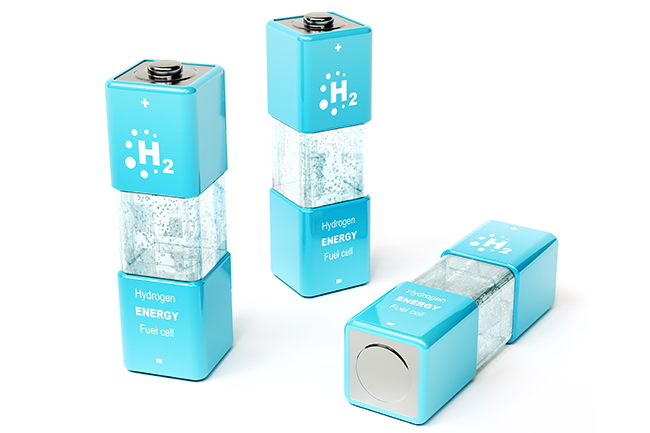

Germany and Spain have breached their NH3 ceilings for eight years running. Photo: © Shutterstock – Marco.Warm
Six countries still breach binding air pollution limits
In 2017, the national emission ceilings for ammonia were still violated by five member states and total emissions have now increased by more than three per cent over the last four years, preliminary data from the European Environment Agency (EEA) shows.
As of 2010, the EU’s National Emission Ceilings (NEC) directive requires member states to meet national emission limits for their total emissions of four important air pollutants: nitrogen oxides (NOx), ammonia (NH3), sulphur dioxide (SO2) and non-methane volatile organic compounds (NMVOCs).
However, official emissions data for 2010–2017 shows that some countries consistently breached their limits for NH3 and NMVOCs in all these years. The Netherlands has now breached its NMVOC ceilings for eight consecutive years, and Germany and Spain have breached their NH3 ceilings for eight years running. Moreover, in 2017, Austria, Croatia, Ireland and the Netherlands were in non-compliance with their NH3 limits.
According to the EEA, emissions from agriculture – mainly from the use of fertilisers and the handling of animal manure – were responsible for excessive NH3 emissions. Emissions of ammonia reduce air quality by increasing the levels of health-damaging secondary particulate matter (PM2.5). Ammonia also disrupts land and water ecosystems through eutrophication – the oversupply of nitrogen nutrients with resulting impacts on biodiversity – which currently affects more than two-thirds of the total ecosystem area in the EU.
Between 2016 and 2017, ammonia emissions increased in 16 member states. For the EU as a whole they rose by 0.4 per cent, mainly due to increases in Spain and Poland, reported the EEA.
The emission limits were set in the 2001 NEC directive and are applicable from 2010 until 2019. In 2016, a revised NEC directive was adopted that sets new national emission reduction commitments that are applicable in two steps, from 2020 and 2030, respectively (see AN 1/2017, p.7). Moreover, a fifth pollutant (particulate matter, PM2.5) was included in the revised directive.
With the adoption of the new NEC directive came a so-called flexibility mechanism that allows member states under certain circumstances to “adjust” downwards their reported emissions for compliance assessment with the national ceilings. This also includes retroactive adjustment of the ceilings for the 2010–2019 period. Following a review and possible approval of member states’ applications by the European Commission, the number of countries deemed to exceed one or more emission ceilings could decrease.
The lack of ambition of the new NEC directive, especially regarding the 2020 reduction commitments, has been strongly criticised by environmental organisations. The EEA analysis now shows that in 2017, the aggregated EU emissions for both NMVOCs and SO2 were already below their respective targets for 2020 (see figure). Moreover, emissions of PM2.5, NH3, and NOx are already very close to their respective 2020 targets. Only an additional reduction of respectively 1.3, 2.3 and 3.2 per cent is required compared to the 2017 levels.
As well as reporting past emissions, member states must also report projected emissions for future target years, in order to assess whether or not they are on track towards meeting their reduction commitments for 2020 and 2030. According to these projections, only twelve countries are on track to meet their reduction commitments set for 2020 for all five pollutants, and only eight countries are on track to meet all their 2030 commitments.
Member states have to produce national air pollution control programmes (NAPCP) that set out the additional emission abatement measures needed to achieve their emission reduction commitments for 2020 and 2030. The first deadline for reporting NAPCPs was 1 April 2019.
Only a few countries delivered in time, however, and by the end of July, as many as ten countries – Bulgaria, Czechia, France, Greece, Hungary, Malta, Romania, Slovakia, Slovenia and Spain – had still not reported. Moreover, some of the reported NAPCPs are only draft versions.
The commission is required to examine the NACPs to ensure that they are fit for purpose, and the results of this examination will be made public.
Clearly, additional efforts are needed for all pollutants if the EU is to achieve its 2030 emission reduction commitments. The required percentage reductions from 2017 emissions are close to 40% for NOx; 36% for PM2.5; 33% for SO2; 15% for NH3; and 13% for NMVOCs.
Christer Ågren
Source: EAA briefing on the NEC directive reporting status 2019 (28 June 2019). Link: https://www.eea.europa.eu/themes/air/national-emission-ceilings/nec-dire...
Note: More detailed emissions data are published by the EEA in the report “European Union emission inventory report 1990–2017 under the UNECE Convention on Long-range Transboundary Air Pollution (LRTAP)”, EEA Report No. 8/2019, which is available at: https://www.eea.europa.eu/publications/european-union-emissions-inventor...
Table. EU member state progress in meeting 2010 NEC directive emission ceilings and 2020/2030 reduction commitments.

 Figure. EU progress in meeting the 2010 emission ceilings and the 2020/2030 reduction commitments for the EU as a whole.
Figure. EU progress in meeting the 2010 emission ceilings and the 2020/2030 reduction commitments for the EU as a whole.
Notes: - Greece did not submit emission inventory data in 2019, which means that the EU totals are underestimated.
- Croatia joined the EU in mid-2013, so for the years 2010–2013 emissions and ceilings are not considered for this country.
- The distance to ceilings was calculated taking into account adjusted emissions as approved by 2018.
- To assess future attainment of 2020 and 2030 reduction commitments, emissions of NOx and NMVOCs from agricultural activities are not considered. The size of emissions from these sources is indicated by the top part of the NOx and NMVOC columns. Thus, only the lower part of the NOx and NMVOCs columns should be considered for comparison with the 2020 and 2030 reduction commitments.

 Download this issue
Download this issue























